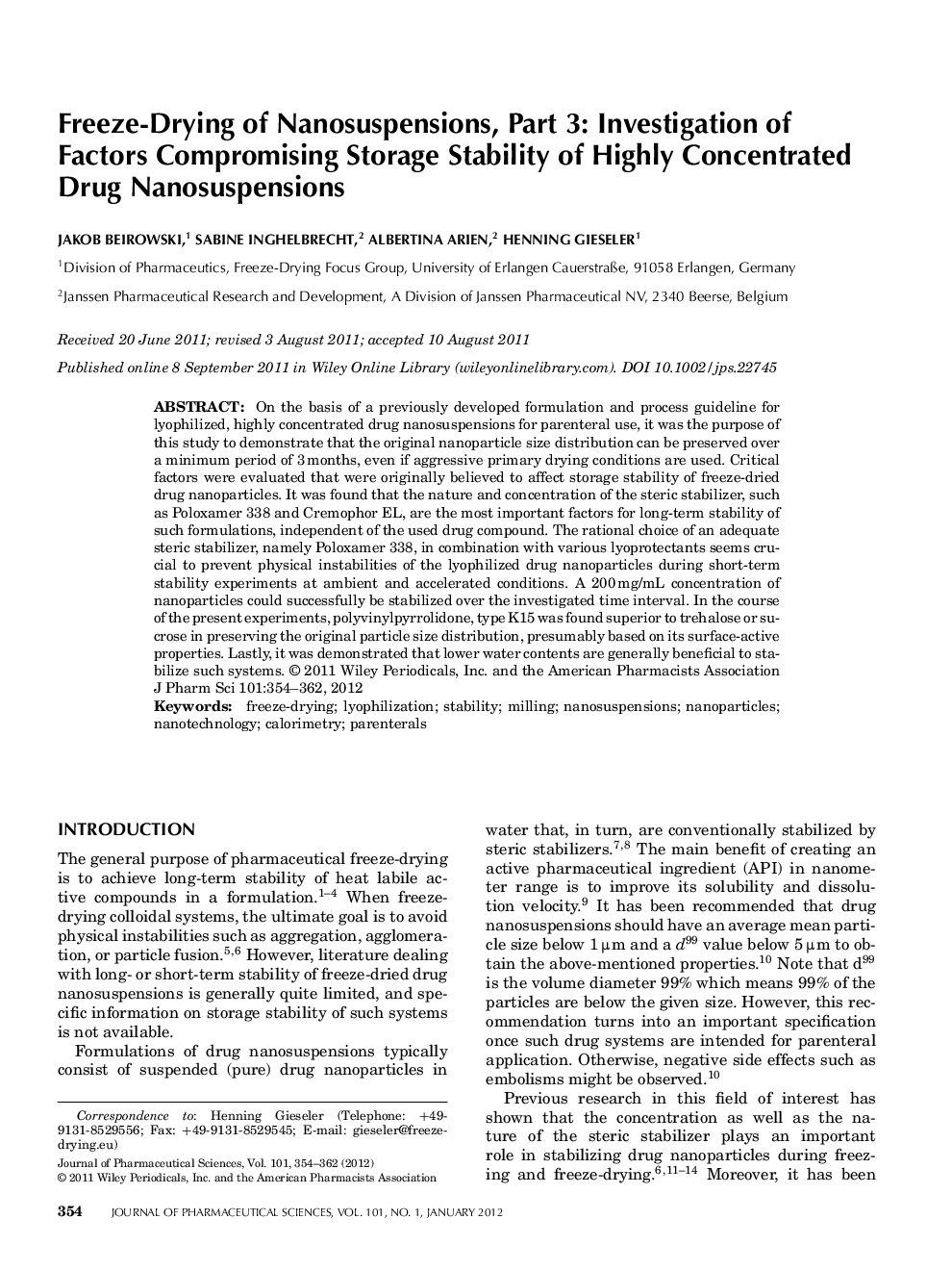| Article ID | Journal | Published Year | Pages | File Type |
|---|---|---|---|---|
| 2485420 | Journal of Pharmaceutical Sciences | 2012 | 9 Pages |
Abstract
On the basis of a previously developed formulation and process guideline for lyophilized, highly concentrated drug nanosuspensions for parenteral use, it was the purpose of this study to demonstrate that the original nanoparticle size distribution can be preserved over a minimum period of 3Â months, even if aggressive primary drying conditions are used. Critical factors were evaluated that were originally believed to affect storage stability of freeze-dried drug nanoparticles. It was found that the nature and concentration of the steric stabilizer, such as Poloxamer 338 and Cremophor EL, are the most important factors for long-term stability of such formulations, independent of the used drug compound. The rational choice of an adequate steric stabilizer, namely Poloxamer 338, in combination with various lyoprotectants seems crucial to prevent physical instabilities of the lyophilized drug nanoparticles during short-term stability experiments at ambient and accelerated conditions. A 200Â mg/mL concentration of nanoparticles could successfully be stabilized over the investigated time interval. In the course of the present experiments, polyvinylpyrrolidone, type K15 was found superior to trehalose or sucrose in preserving the original particle size distribution, presumably based on its surface-active properties. Lastly, it was demonstrated that lower water contents are generally beneficial to stabilize such systems. © 2011 Wiley Periodicals, Inc. and the American Pharmacists Association.
Keywords
Related Topics
Health Sciences
Pharmacology, Toxicology and Pharmaceutical Science
Drug Discovery
Authors
Jakob Beirowski, Sabine Inghelbrecht, Albertina Arien, Henning Gieseler,
